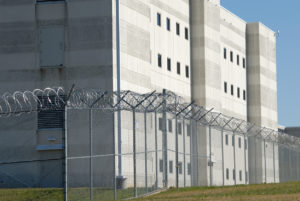Inmate-on-Inmate Assaults in County Jails

Inmate-on-Inmate Assaults Leading to Death in County Jails
Introduction
County jails face the issue of inmate-on-inmate assaults, some of which result in death. These incidents raise concerns about the effectiveness of jail management, the adequacy of detainee supervision, and the overall safety of pretrial detainees incarcerated in county jails.
The Scope of the Problem
County jails tend to incarcerate a lot of people who have not yet been tried, and who have therefore not been convicted of anything. But they also house people who have been convicted and who are awaiting transfer to a prison, and people who have been declared incompetent to stand trial and are awaiting transfer to a compentency restoration facility. County jails therefore are different from prisons, which house only convicted inmates. This mix of people in county jails, combined with overcrowding and lack of training of jailers, can create a volatile environment where violence can quickly occur.
Inmate-on-inmate violence in county jails is not uncommon, and while most assaults result in non-fatal injuries, there has been an alarming increase in deaths caused by such attacks. Sexual assaults also occur in county jails. Our law firm has handled both cases involving sexual assault in county jail and county jail deaths resulting from assault. Fights among inmates often stem from gang rivalries, racial tensions, disputes over contraband, and personal conflicts.
Causes of Deadly Assaults in County Jails
Several factors contribute to the commonality of deadly county jail detainee-on-detainee assaults and deaths:
1. Overcrowding and Understaffing
Many county jails operate beyond their intended capacity, leading to overcrowding. Overcrowded facilities make it difficult for jailers and other jail employees to appropriately monitor inmates. Understaffing is also a problem that we have seen in plenty jail death cases.
2. Gang Activity and Rivalries
Gangs play a significant role in jail violence. Many county jails house members of different rival gangs. Tensions often escalate into deadly fights. Gang members might engage in violent acts to establish dominance, settle disputes, or retaliate against perceived enemies.
3. Mental Health and Substance Abuse Issues
A significant percentage of jail inmates suffer from untreated mental health disorders and substance abuse problems. It seems at times that nearly all of our jail death cases touch on the issue of mental illness. Mental health issues can result in unpredictable behavior and violent outbursts. Inmates with severe mental health conditions may also struggle with controlling their urges.
4. Lack of Proper Classification and Segregation
Proper classification of inmates is essential to maintaining jail safety. Classification should occur at the conclusion of booking. However, many county jails fail to adequately keep violent inmates away from non-violent inmates.
5. Failure to Address Warning Signs
Jailers and other jail employees are often forced to work long hours due to understaffing. This can result in failures to monitor inmate behavior. Jailers then miss warning signs, such as prior fights and threats. If a jail assault escalates quickly, it can result in death.
Consequences of Inmate Deaths
The consequences of death from and inmate-on-inmate jail assaults go beyond loss of life, and they can have social, legal, and financial impacts.
1. Civil Liability
When an inmate is killed due to county jail violence, the county might face a lawsuit filed by the victim’s family. A lawsuits might alleged constitutional violations, brought puruant to a federal statute. A jail death lawyer might also allege failure to provide adequate protection, or deliberate indifference to detainee safety.
2. Affect on Other Detainees
Seeing or learning about violent jail deaths in a jail setting can result severe psychological distress, including PTSD. Fear can increase in the jail population, resulting in even more violence or increased mental health issues.
3. Jail Administration
Frequent deadly assaults disrupt the normal functioning of a county jail. Administrators may need to implement emergency security measures, increase staff presence, and conduct extensive investigations, all of which demand additional resources and time.
4. Erosion of Public Trust
County jails are responsible for ensuring the safety of those in their custody. When inmate homicides occur, public confidence in the criminal justice system is undermined. Families of inmates, advocacy groups, and the general public may call for reforms and increased oversight of jail operations.
Potential Solutions to Reduce Deadly Jail Violence
Reducing inmate-on-inmate assaults that result in death requires a multi-faceted approach involving policy changes, improved staffing, and enhanced oversight.
1. Addressing Overcrowding and Staffing Issues
- Reducing Jail Populations: Implementing alternative sentencing for non-violent offenders, expanding pretrial diversion programs, and using electronic monitoring can help alleviate overcrowding.
- Increasing Staff and Training: Hiring more correctional officers and providing them with specialized training in conflict resolution and crisis intervention can improve inmate supervision and safety.
2. Enhancing Inmate Classification and Segregation
- Risk Assessment Tools: Jails should implement comprehensive risk assessment tools to properly classify inmates based on their criminal history, gang affiliation, and behavioral patterns.
- Segregation of Violent Offenders: High-risk inmates should be housed separately from those who are less likely to engage in violence.
3. Improving Mental Health and Substance Abuse Treatment
- Screening and Intervention: County jails should conduct thorough mental health screenings upon intake and provide necessary psychiatric care.
- Counseling and Rehabilitation: Expanding access to mental health counseling, substance abuse treatment, and anger management programs can help reduce violent tendencies among inmates.
4. Strengthening Security Measures
- Cameras and Monitoring: Installing more security cameras and using real-time monitoring can help detect and prevent violent incidents.
- Cell Inspections: Frequent searches for contraband weapons can reduce the likelihood of deadly assaults.
- Response Policies: Implementing rapid response teams trained to handle violent outbreaks can mitigate harm.
5. Increasing Transparency and Oversight
- Jail Oversight Boards: Establishing independent agencies to investigate inmate deaths and jail conditions can help identify systemic failures.
- Reporting Requirements: Mandating the publication of jail violence statistics can hold facilities accountable and push for necessary reforms.
Conclusion
The rise in inmate-on-inmate assaults resulting in death within county jails highlights the urgent need for systemic changes. If you have been affected by the death of a loved one in a county jail, you might ocnsider reaching out to a worngful death lawyer.

